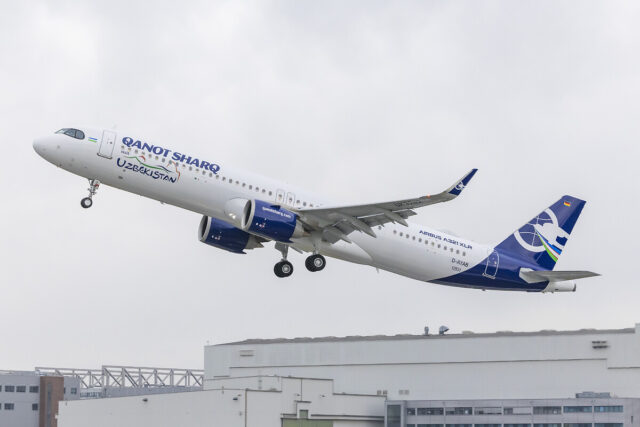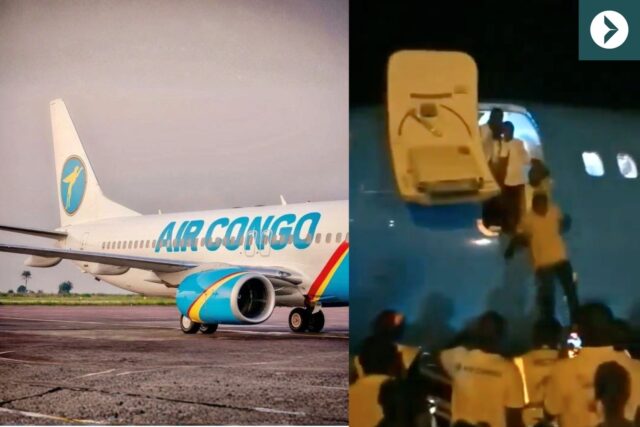Design flaws found in 14 Russian Sukhoi Superjet 100 fuselages raising more safety questions

August 27, 2025

Russian media have reported that design flaws have been found in 14 of Russia’s Sukhoi Superjet 100 passenger aircraft. The fuselages appear repairable, although it is yet another issue in the Superjet’s checkered history.
Design flaws found in Superjet fuselage
Russian news outlet, Izvestia, reported on a letter from PJSC Yakovlev to the Federal Air Transport Agency dated May 15, 2025.
It stated that there is a risk of design defects in the fuselage of 14 Sukhoi Superjet 100 (RRJ-95) aircraft. These aircraft are used on domestic routes and were all built in 2016.

The issue involves improperly secured stringers (longitudinal reinforcement beams) in the fuselage section between the cockpit and the passenger door. This misassembly affects 14 Superjets in total, with serial numbers 95104 to 95117.
Five of these aircraft are currently flying with Yamal, one with Azimuth, one with Rossiya, while the remaining seven are inactive.
The fix requires significant disassembly, including removal of the door‑frame skin, lavatory module, and insulation, to reach and repair the affected area. Yakovlev and the regulator have classified this as a proactive safety measure aimed at preserving the airworthiness of the existing fleet.
.
Ongoing issues with the Superjet
Between 2007 and 2022, over 230 Superjets were built. Of these, around 93 retain their airworthiness certificates. According to AeroTime, five Superjet complete hull losses have occurred over the history of the programme.
Notably, incident reports have risen sharply since sanctions were imposed on Russia in early 2022. By 2024, 35 incidents were recorded, more than double the total in 2023, which itself was twice the number reported the previous year.
Writing in late 2024 after another Superjet caught fire in Turkey, Russia’s Kommersant reported “the number of technical incidents with the Sukhoi Superjet 100 has doubled over the past three years.”
Russian passenger plane caught fire at Antalya airport.
— Special Kherson Cat 🐈🇺🇦 (@bayraktar_1love) November 24, 2024
The fire occurred on board the Sukhoi Superjet 100-95LR aircraft of Azimut Airlines, which arrived from Sochi, Russia. pic.twitter.com/OqaslugcBm
The report notes that he number of serious breakdowns of the Russian airliner is approximately the same as that of Boeing aircraft used by domestic carriers. However, there are twice as many Boeings in Russia as Superjets.
The aircraft is under pressure from Western sanctions, making it difficult to keep the aircraft operating. This is not only affecting Russian-built Superjets, but also Airbus and Boeing aircraft.
Russia-produced aircraft Sukhoi Superjet-100 belonging to Azimuth airlines fell apart in mid-air. pic.twitter.com/yg6HB3wE6q
— Igor Sushko (@igorsushko) July 22, 2023
In particular, the new Airbus A320/A321neos are in poor shape. Despite (or because of) being some of the newest aircraft in Russia, they have one of the worst airworthiness rates. Planespotters.net lists all eight S7 Airlines A321neos, along with 20 out of 31 A320neos, as parked.
The new and complicated CFM International LEAP-1A or Pratt & Whitney PW1100G-JM engines are exceptionally difficult for Russia to maintain.
Being a new aircraft, there is no black market to source cannibalised parts from old and retired airframes for A320neos, as there is for other jets. This allows sanctions to be more effective with these aircraft types.
Russia’s first and only serial production passenger jet
Until the Yakovlev MC-21 enters service, the Sukhoi Superjet 100 remains the only commercial passenger aircraft Russia has developed since the collapse of the Soviet Union.
Originally conceived as a joint project with European and US partners, the jet relied on imported parts for roughly 80% of its components. Its fuselage was manufactured at the Yakovlev Production Centre in Komsomolsk-on-Amur.
Following Western sanctions in 2022, Russia managed to complete just seven additional Superjets from existing stockpiles of foreign parts. Once those supplies were exhausted, production effectively stalled, leaving the programme unable to deliver new aircraft.

Russia is currently developing an import-substituted version called the SSJ-New. It made its first flight in April 2025 using Russian Aviadvigatel PD-8 engines. The first deliveries are expected in 2026.
Making matters worse, China has removed sanctioned Russia from its widebody airliner C929 programme. China chose to go it alone as it needs to import critical components from Western companies that are not permitted to work with Russia.
Pipedream or not, Russia recently filed patents for its own design for a future widebody airliner that it says will be more efficient than the Boeing 787 Dreamliner
















